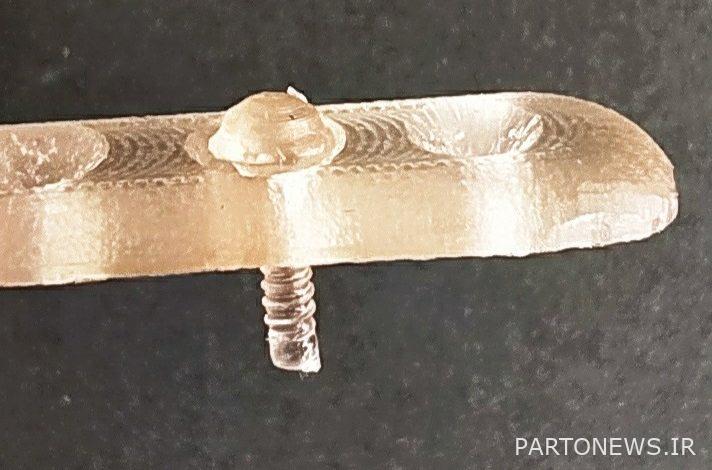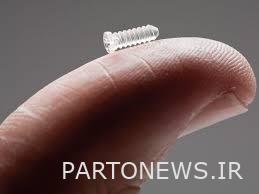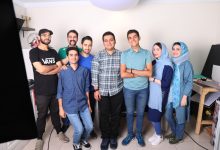Polymer implants are produced in the country

One of the most important teams in the Amen complex is a team focused on polymer implants and their manufacturing. Follow Accomotive’s interview with Dr. Ruhollah Ghodsi, a manufacturer of polymer implants in the country:
Please tell us a little about yourself:
I am Seyed Ruhollah Ghodsi, a post-doctoral graduate in biomechanics, and a member of the faculty of the Islamic Azad University. I entered various industries in 1978 and was interested in production. My main specialty is in the field of system design, and since 1988 I have been working on simulating blood flow inside the brain for aneurysm disease (I also used to do computational programming in the past) and also did my postdoctoral fellowship in this field. I went to the University of Tehran and based on my previous experience in industrial work, especially in the field of D3 printers and product production, a team of experts came together and in 1994 we started discussing the production of facial and skull prostheses. In 1995, we got the license of the Ministry of Health. In addition, we produced other products and often worked in the field of implants, of course, we also worked on ideas such as skull surgery kits, which were also covered by news agencies, and at the Shahid Motahari Festival as equipment. Applied in the industry we won. This path went through all the mazes and implantation inside the body is really very complicated because it is considered as the last risk class of medical equipment.
What is the “hazard class” you mentioned?
When you want to build any kind of non-medical equipment, you first need the permission of the Ministry of Industry and Mines, and the Ministry does not have much control over the quality of work in providing this type of license; But in the field of medical equipment, there is oversight, and it has to go through a long process of production, sterilization, body type adaptation, and the higher the risk class, the higher the requirements; The last risk class is related to in vivo implants, which are divided into several branches in the body, one of which is equipment that is connected to the central nerves, such as prostheses that we make, and the other category is related to equipment that is in the body. Are decomposed. In the production of medical equipment in Iran, there are 4 hazard classes, of which hazard class A is more related to consumption items such as guns. Hazard class B is slightly higher than hazard class one; But hazards class C and D are often directly related to the human body; The products we produce with the help of the Amen set are of type D of hazard class. At first, the presidency selected us for this project, and during a phone call, we were asked to make this product, and we were the only technology among the 3 selected technologies that we made a prototype of in 1997, that product, “implants Polymer ”and is a degradable product.
How did the production of “polymer implants” start? What are its advantages and who are its target markets?
This product, especially that screws and plates are perishable, its main application is in injuries to the face, jaw and skull with the causes of trauma, accident, tumor, etc .; After the lesion has healed, the perishable equipment begins to be absorbed by the body and then disposed of. This type of equipment is most useful for children and infants, because children’s skulls and bones are growing, and if they use non-destructible screws and plates, they should remove it after 6 months to 1 year, because if they do not remove it. , The skull grows heterogeneously. The needs assessment of this product was done by the presidency and we also entered the project as technologists; Of course, apart from the Amen complex, other people are also involved in this project. This product has a growing market in the world and due to the fact that it is a very special product, it has no producer in Iran and even in the Middle East it does not have a producer in this way.

Did we import in Iran and the Middle East? What are similar foreign examples in the world?
One of the largest manufacturers is Synthesis and Stryker in the United States, and one of the most famous is Inion in Finland; This product is being formed in new Asian countries and our country’s imports to date have been mostly from synthesis and anion.
Who is on the team and what are their specialties?
One of the main people in the project is Dr. Seyed Mohammad Ghodsi, a professor at the Faculty of Medical Sciences of the University of Tehran and a neurosurgeon. They played a key role clinically because they were also product users. In addition to her, other people such as Dr. Zahra Namazi are faculty members of the Faculty of Medical Sciences of Shahid Medical University, a specialist in dental materials and biomaterials. There were also people on the team who emigrated during this time. We often tried to attract people who had high teamwork skills; Some may think only of the technical part of the subject, but the administrative and documentary work is also considerable; The company is called “Star of Healing” and the brand of the company that produces prostheses is called “Danavol”, which has been producing the product since 1995. Setareh Darman Afarin Company has succeeded in receiving ISO13485: 2016 and ISO9001: 2015 standards and obtaining a license from the General Directorate of Medical Equipment. During the process of receiving the standard and performing strict audits, the process of document production has been formed in the company, which makes it possible for us to refer to us if, for example, the patient had surgery three years ago and has a complaint; We have a lot number from the patient and the product we sold to him, by which the whole number of the sterile route, production, material, supplier, etc. is extracted; This documentation needs a foundation that we created. In general, there are different people in our team with different specialties, for example, we have a specialist in the field of mechanics in the field of production design, an electronics specialist, a biomaterials specialist, and so on.
What are your marketing and export plans?
One of our shareholders is the marketing professionals themselves, so they are responsible for marketing. In the sales department, we have a team and our target community is first doctors, then surgeons (as users) and finally patients as people who use the products in their bodies. In the field of Export We also tried a lot for our previous products but it has not been successful yet. In general, we have “exports” in our future plans, but we have just started this path and we are currently studying it in the field. We have even sent specifications for 2 countries in this regard; Although exports are a complex category, 80% of which is related to politics, in the 20% of which we are effective, it is very difficult to find export corridors; For example, we recently took a few steps to export the product to Iraq, but it was not successful.
Do you need a special permit to conduct a field study on exports? What are the challenges in obtaining a health license? What advice do you have for people who want to enter this field?
Yes; We have obtained all the necessary permits. There were companies before us in the field of implants in the body, but we were the first company to get a prosthesis license from the General Directorate of Medical Equipment. My advice to people to enter this field is to put on iron shoes first because there are many failures in this way. We even went bankrupt several times because the conditions for working are very difficult; So first they have to have hope and get the job done. Infrastructure issues such as document collection, technical knowledge, and the clarity of the work process are very important in this area; Some companies have ideas that come only in the laboratory, but the possibility of producing them in the industry is not at all predictable; So they are at the beginning of the road with a new idea because one of the most important and costly issues in industrial production is reproducibility to make sure that the quality of the first product is similar to the last.
What was the biggest challenge you had along the way?
The biggest challenge is manpower, but thank God we were very lucky in this regard; In general, the manpower that has the ability and skill of teamwork and endures the hard work is small and they are right, because if they spend their lives elsewhere, they will achieve financial results faster and the economic pressure is very high. After manpower, building infrastructure is the most important challenge.
What skills do you think higher education graduates need to focus on to enter the entrepreneurial space?
Having expertise is necessary for teamwork; One of our criteria for attracting Avesta people is that person, and we believe that if that person is “carbald”, the job will be referred to him; At first, when people enter the university, they are confused, but after the second year of the bachelor’s degree, they have to enter the specialties little by little, and pursue their interests, and move in their own direction. For example, a person may know ten tasks, but it is better to be an expert and problem solver in at least two tasks. Comprehensive individuals with general abilities are not much needed by private companies; Because the problems are very deep. Another point is that it is better for people not to go to simple issues, for example, not everyone to go to software work because these issues are saturated and it is better to find bottlenecks.
And the last word:
My advice to entrepreneurs is to do research in the market before entering the field of laboratory and industrial production Sales Grind and get field information. Have financial calculations on their work and even do these calculations pessimistically to predict the worst conditions when entering the path.
How do you rate this article?


